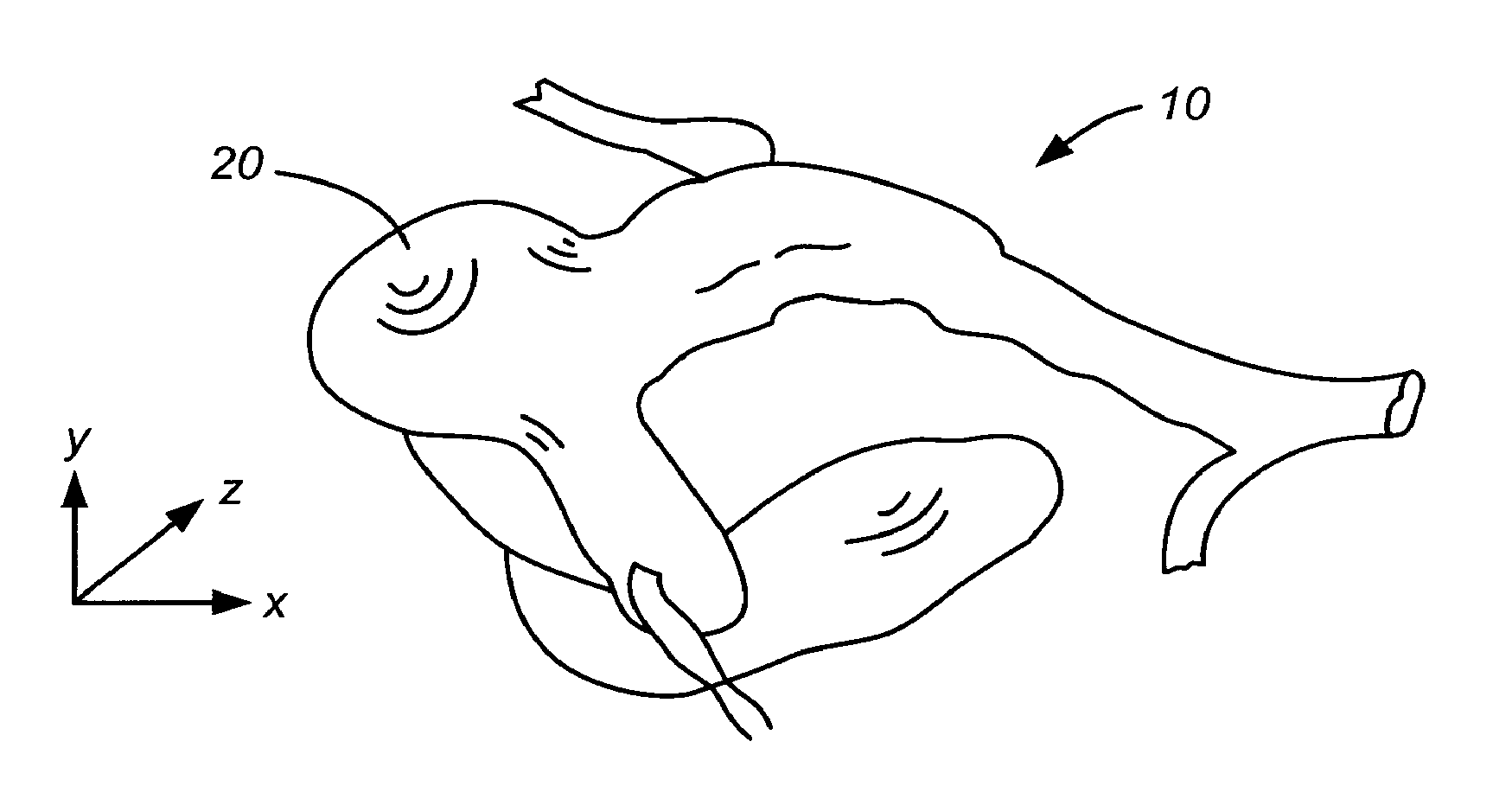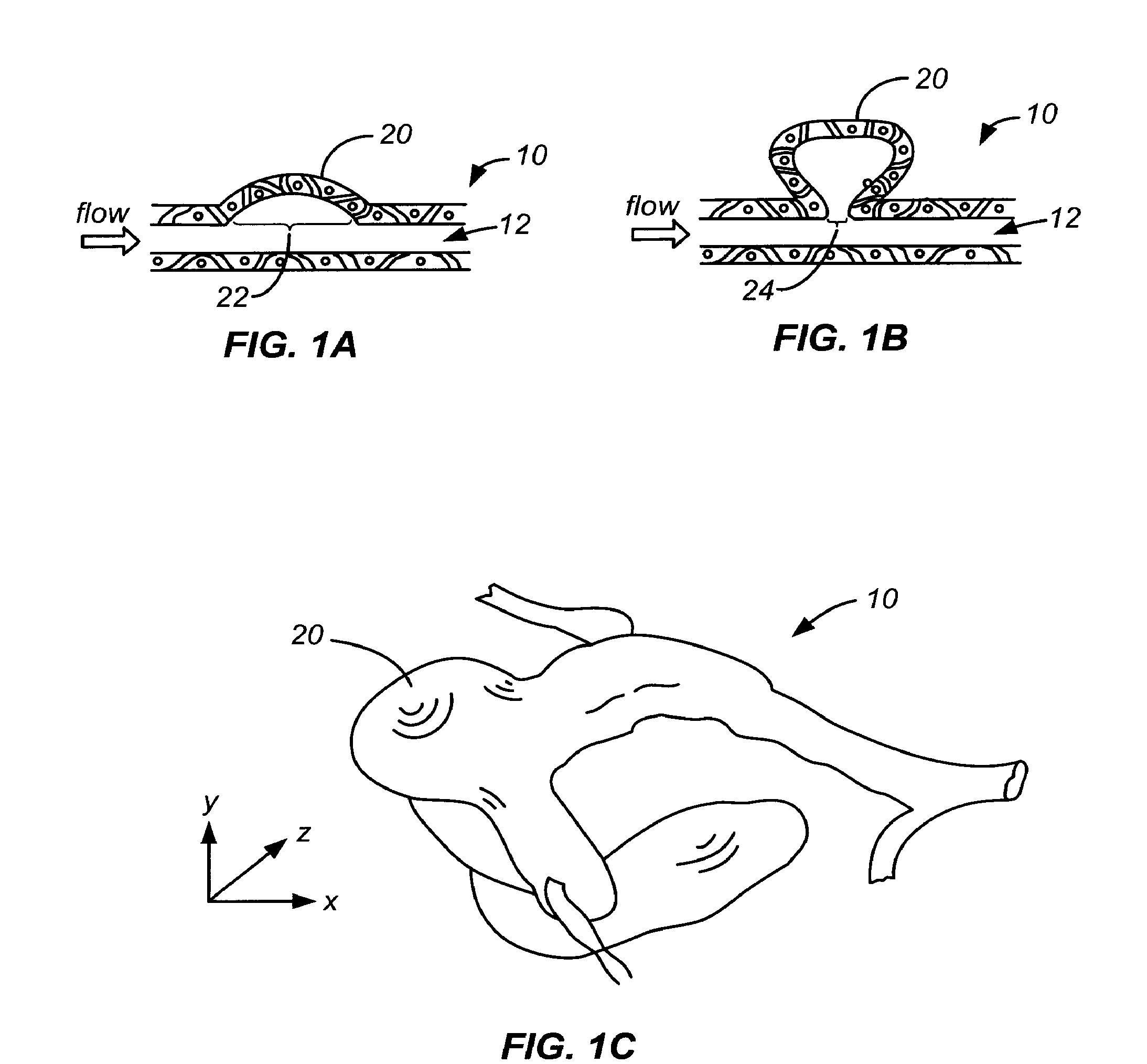Devices and methods for accessing and treating an aneurysm
a technology applied in the field of devices and methods for accessing and treating an aneurysm, can solve the problems of inability to detect small or intracranial aneurysms, prolapse of bleeding, and inability to use imaging modalities available today
- Summary
- Abstract
- Description
- Claims
- Application Information
AI Technical Summary
Benefits of technology
Problems solved by technology
Method used
Image
Examples
example 1
[0087]Fifteen consecutive patients with known cerebral vascular pathology were examined by catheter rotational angiography. These patients then underwent treatment with endovascular coils. On the workstation, the arterial segments beginning at the aneurysm and extending proximally for the next three major curves were measured from greatest curvature to greatest curvature. The microcatheter forming wire was then bend in 3-dimensions to reflect those measurements. The resulting curve was then exaggerated to allow for the expected straightening when the microcatheter would be introduced into the bloodstream.
[0088]The forming ware was then placed in the microcatheter, and these curves were set in the tip of the microcatheter with a steam generator. The finished microcatheter had a plurality of complex curves in multiple planes.
[0089]The time needed to reconstruct arteries on current workstations takes only minutes. Measurements were achieved in less than one minute and on average in les...
example 2
[0091]A group of patients with pre-determined characteristics would be chosen. The characteristics can be selected from genetic markers, sex, race, ethnicity, BMI, age, etc. Each patient is then examined by catheter rotational angiography to assess vascular anatomy. On the workstation, similar arterial segments for the patients are compared for three or more major curves. The results are analyzed and compared to identify similar structures and to put together a library of catheters having three or more curves in two or more planes. The microcatheter forming wire having shape memory properties is then bend in 3-dimensions to reflect those measurements but would allow for storage in two dimensions. The resulting curve is then exaggerated to allow for the expected straightening when the microcatheter is introduced into the bloodstream.
[0092]The forming ware was then placed in the microcatheter, and these curves would be set in the tip of the microcatheter with a steam generator. The fi...
PUM
 Login to View More
Login to View More Abstract
Description
Claims
Application Information
 Login to View More
Login to View More - R&D
- Intellectual Property
- Life Sciences
- Materials
- Tech Scout
- Unparalleled Data Quality
- Higher Quality Content
- 60% Fewer Hallucinations
Browse by: Latest US Patents, China's latest patents, Technical Efficacy Thesaurus, Application Domain, Technology Topic, Popular Technical Reports.
© 2025 PatSnap. All rights reserved.Legal|Privacy policy|Modern Slavery Act Transparency Statement|Sitemap|About US| Contact US: help@patsnap.com



